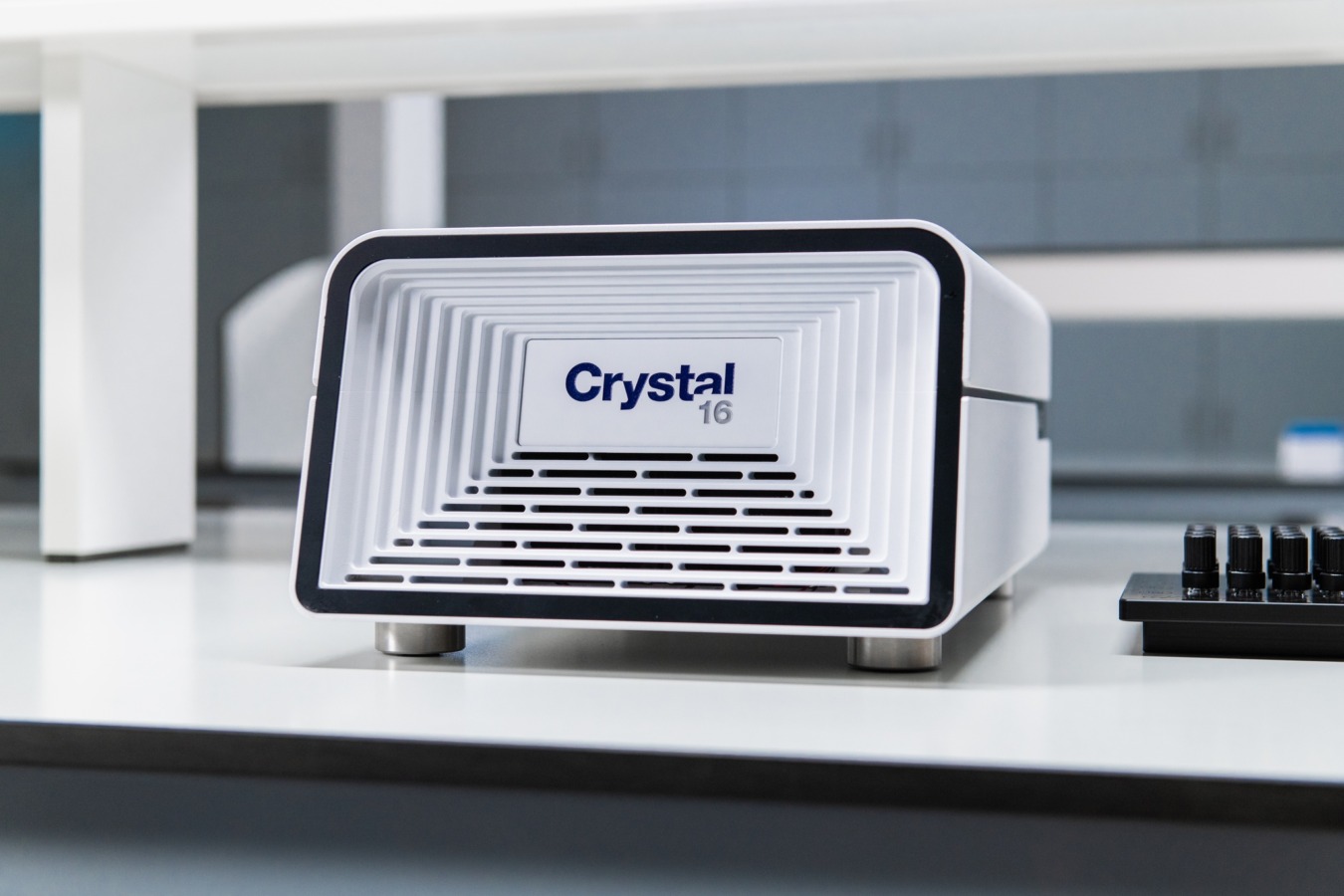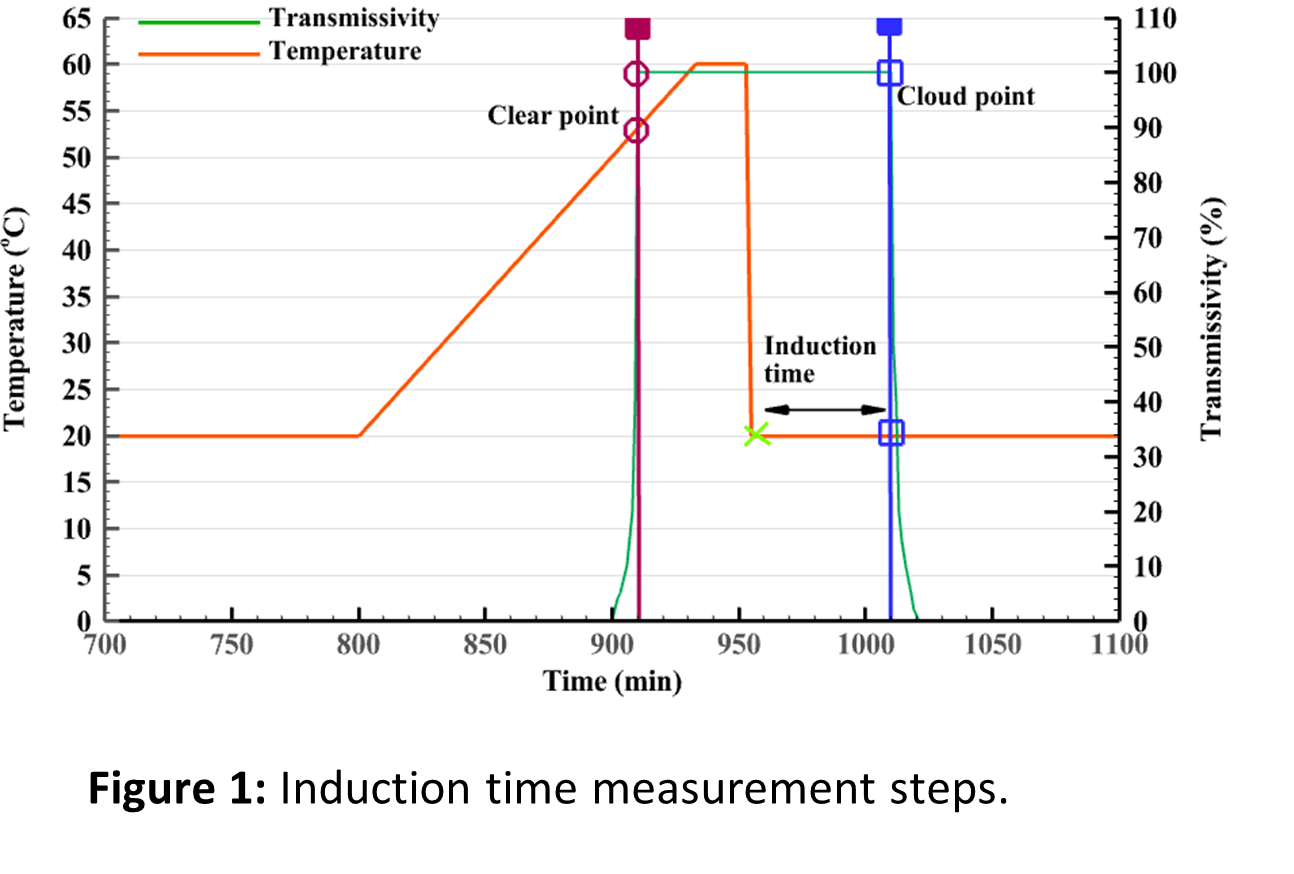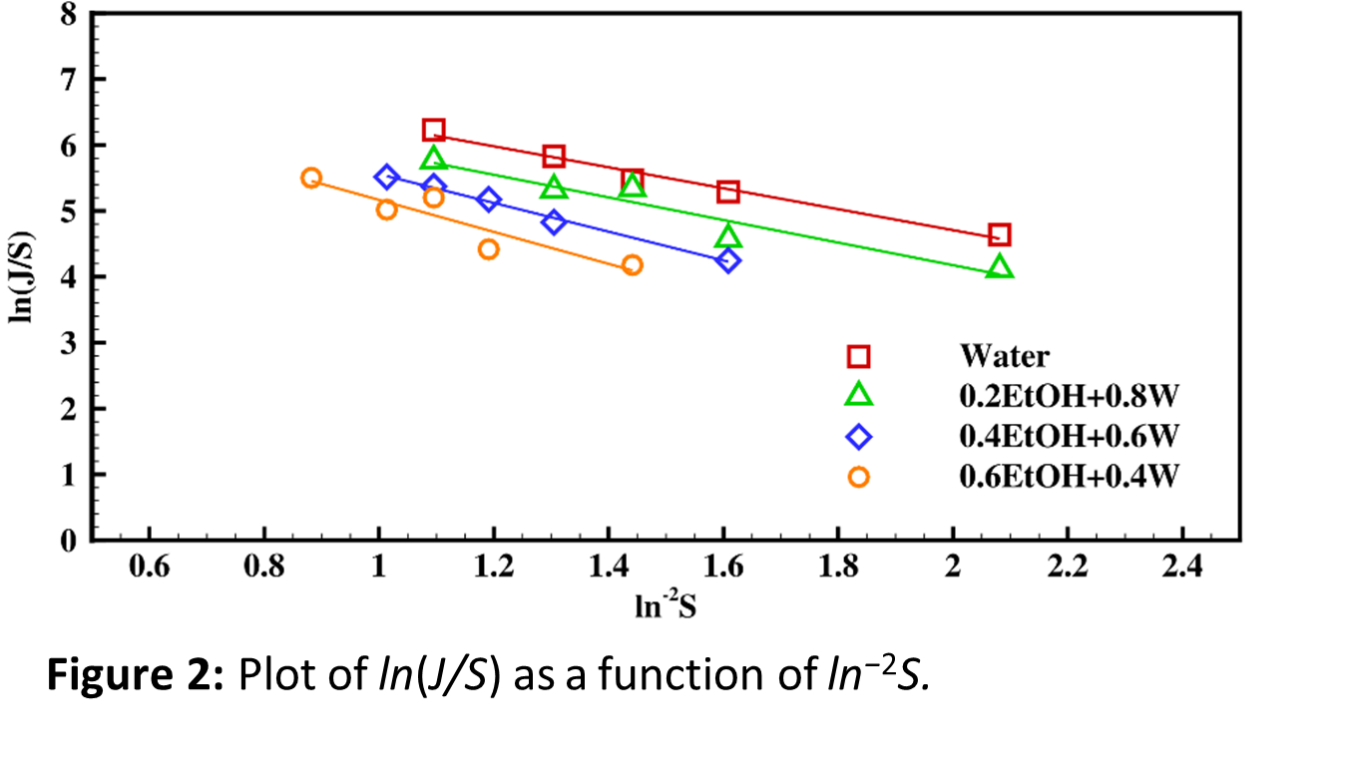Nucleation kinetics
Nucleation is the first step of crystallization that profoundly influences crystal growth, polymorphism, crystal size, and distribution.
Nucleation kinetics is determined by the isothermal method, in which induction time is measured at various supersaturations. This method utilizes the stochastic nature of nucleation to construct the cumulative probability distribution of induction time at constant supersaturation.
In this article, we discuss how the nucleation kinetics of ascorbic acid in water and ethanol-water binary solvent systems were analysed using Crystal16 by the isothermal method. The instrument's software represented the measured induction time values well by the Poisson probability distribution function to determine the nucleation rate (J) and growth time (tg) using classical nucleation theory (CNT).

Measurement of induction time
The Crystal16 easily measures induction time at different supersaturations by making use of its transmissivity technology. The instrument's software built-in algorithm determines the nucleation kinetics by employing classical nucleation theory.
The nucleation kinetics of ascorbic acid in water (W) and three binary solvent systems of water-ethanol (EtOH) has been determined using Crystal16. First, the temperature was increased from 20 °C to 60 °C at slow heating of 0.3 °C/min. Then, the supersaturation was created by instantly dropping to 20 °C at a cooling rate of 20 °C/min. Subsequently, the system was maintained at a constant temperature for a long duration (approx. 5 hours), as shown in Figure 1. When the nuclei were formed, the transmissivity dropped, as indicated by the cloud point. The induction time data points were collected more than 80 times at each supersaturation and compiled in the software’s multi-analyses feature.

Results
Crystal16’s software fits the probability data with a non-linear least square method, which gives nucleation rate (J) and growth time (tg). The nucleation rate shows a positive dependence on supersaturation for each solvent system. In contrast, the growth time decreases with increased supersaturation, suggesting a shorter duration for nuclei to attain detectable sizes. The nucleation rate decreases with an increase in ethanol composition from 0.2 to 0.6-mole fraction in water.
The software plots a linear graph of ln(J/S) versus 1/ln2S to estimate the nucleation parameters A and B from the intercept and the slope, as shown in Figure 2. The kinetic parameter (A) describes the prospect of building units attached to the nucleus, whereas the thermodynamic parameter (B) represents the activation energy needed for nucleation.

Conclusion
The Crystal16 easily measured induction time at different supersaturations, and the instrument's software built-in algorithm determines the nucleation kinetics by employing classical nucleation theory. This enhances the understanding of nucleation phenomena and optimizes crystallization processes across various scientific and industrial applications.
Curious to learn more?
Read the full application note "Automating Nucleation Kinetics Analysis With Crystal16: Effect of Solvent on Nucleation".